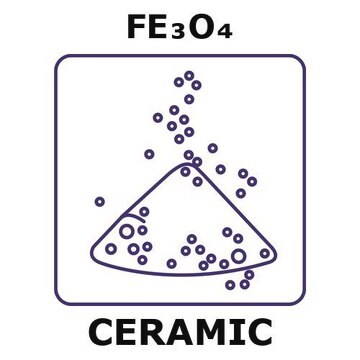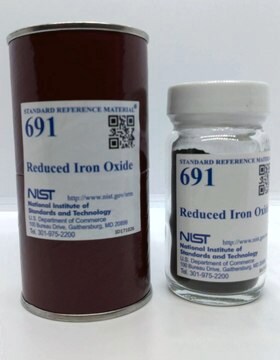Key Documents
400866
Iron(II) oxide
−10 mesh, ≥99.6% trace metals basis
Synonim(y):
Ferrous oxide, Iron monooxide
About This Item
Polecane produkty
Poziom jakości
Próba
≥99.6% trace metals basis
Postać
powder
zanieczyszczenia
≤5% free iron
wielkość cząstki
−10 mesh
gęstość
5.7 g/mL at 25 °C (lit.)
Zastosowanie
battery manufacturing
ciąg SMILES
O=[Fe]
InChI
1S/Fe.O
Klucz InChI
UQSXHKLRYXJYBZ-UHFFFAOYSA-N
Szukasz podobnych produktów? Odwiedź Przewodnik dotyczący porównywania produktów
Opis ogólny
Kod klasy składowania
13 - Non Combustible Solids
Klasa zagrożenia wodnego (WGK)
nwg
Temperatura zapłonu (°F)
Not applicable
Temperatura zapłonu (°C)
Not applicable
Wybierz jedną z najnowszych wersji:
Masz już ten produkt?
Dokumenty związane z niedawno zakupionymi produktami zostały zamieszczone w Bibliotece dokumentów.
Klienci oglądali również te produkty
Produkty
Magnetism and magnetic materials have been of scientific interest for over 1,000 years. More recently, fundamental investigations have focused on exploring the various types of magnetic materials and understanding the magnetic effects created by electric currents.
Magnetic materials permeate numerous daily activities in our lives. They are essential components of a diversity of products including hard drives that reliably store information on our computers, decorative magnets that keep the shopping list attached to the refrigerator door, electric bicycles that speed our commute to work, as well as wind turbines for conversion of wind energy to electrical power.
Nasz zespół naukowców ma doświadczenie we wszystkich obszarach badań, w tym w naukach przyrodniczych, materiałoznawstwie, syntezie chemicznej, chromatografii, analityce i wielu innych dziedzinach.
Skontaktuj się z zespołem ds. pomocy technicznej









